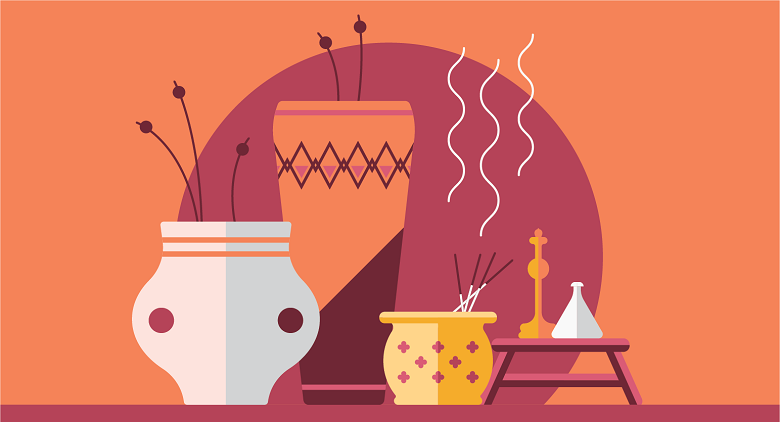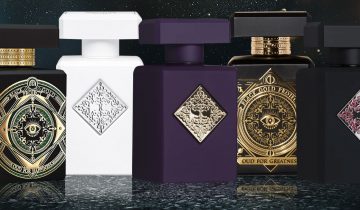
Introduction:
Perfume, a daily ritual for many, possesses the remarkable ability to stir emotions and invoke cherished memories. But have you ever wondered about the intricate process behind creating these captivating scents? Crafting perfume is a harmonious blend of artistry and science that has fascinated fragrance enthusiasts for generations. In this article, we will delve into the diverse methods and ingredients used in perfume making, exploring its historical roots and cultural significance. Join us as we embark on a fragrant journey to uncover the secrets of perfume production.
Perfume Through the Ages: Perfume has graced human existence since time immemorial, with ancient civilizations harnessing the scents of nature to create colognes and women’s fragrances. In the past, perfumes took various forms, from dried herbs to burning wood and pressed oils.
In today’s world, scented products like soaps, lotions, candles, and personal perfumes have become an integral part of daily life. However, it’s easy to overlook the intricate manufacturing processes that transform raw materials into fragrant delights. To grasp the essence of perfume making, let’s explore its historical evolution and modern production methods, revealing the meticulous work that goes into crafting your favorite scents.
Perfume in Ancient Times: In antiquity, perfume makers lacked the ability to produce synthetic fragrances, relying solely on natural ingredients. Early civilizations infused body lotions and water with aromatic flowers, woods, and spices like cinnamon and myrrh. They also extracted essential oils from plants and turned to methods such as expression, distillation, enfleurage, and maceration to create fragrances.
- Expression: One of the oldest extraction techniques, expression involves mechanically or manually pressing plants to extract their oils, commonly used for citrus fruits.
- Enfleurage: This process entailed spreading flowers or plant material on glass sheets coated with grease, capturing the fragrance in the grease. It was favored by the Egyptians and later adopted by French perfumers in the 18th century.
- Distillation: Invented by the Persian chemist Avicenna in the 10th century, distillation involves heating plant material to produce fragrant steam, which is then collected and liquefied. This method is still widely employed today.
- Maceration: Similar to enfleurage but using warm fats to absorb fragrance from plant materials. These fats are later dissolved in alcohol to extract essential oils.
Early civilizations also collected natural animal oils like musk, ambergris, and civet to enhance perfumes. These materials, obtained from various animals, added unique scents and properties to their creations, laying the foundation for modern perfume-making practices.
The Perfume Manufacturing Process: Crafting perfume is a meticulous process that encompasses ingredient collection, oil extraction (utilizing techniques like solvent extraction), blending, aging, and quality control. This artistry mirrors winemaking in its attention to detail and the passage of time, resulting in a refined fragrance. Notably, many ancient methods remain integral to contemporary perfume production.
Ingredients Used in Perfume Making: Perfumes often rely on natural ingredients for their aromatic oils, encompassing a diverse range of plants, fruits, woods, and even animal secretions. Additionally, resources like alcohol, coal tar, tars, and petrochemicals are employed during the manufacturing process to create perfume oils.
For scents unattainable in nature or those without essential oils, synthetic chemicals come into play, replicating these elusive fragrances. This fusion of natural and synthetic elements allows perfumers to craft diverse and captivating scents.
Common Natural Ingredients:
- Rose petals
- Myrrh
- Frankincense (Olibanum)
- Jasmine
- Oakmoss
- Sandalwood
- Vanilla
- Citron
Common Synthetic Ingredients:
- Aliphatic aldehydes (adding sparkle to Chanel No. 5)
- Calone
- Iso E Super
- Ambergris (synthetically reproduced)
- Hedione
- Indole
- Musk (synthetically reproduced)
- Lily of the Valley (synthetically reproduced)
Extraction Methods: The heart of perfume-making lies in extracting essential oils from natural ingredients. Various techniques are employed, ranging from ancient practices to modern innovations. These methods include:
- Solvent Extraction: Plant materials are placed in rotating drums, covered with solvents like petroleum ether or benzene, dissolving the plant components. The resulting waxy substance is then mixed with ethyl alcohol, allowing the oil to dissolve. The alcohol is later evaporated, leaving concentrated perfume oil.
- Steam Distillation: Natural materials are placed in a still, heated to extract fragrant steam, which is then collected and condensed. Steam distillation is an enduring method widely used for oil extraction.
- Expression: The oldest method, expression involves pressing plants mechanically or manually to release their oils. It’s commonly used for citrus fruits.
- Enfleurage: Glass sheets coated with grease are adorned with flowers or plant material. These sheets are stacked between wooden frames, and as the flowers are replaced and moved by hand, the grease absorbs the fragrance.
- Maceration: Warm fats are used to absorb fragrance from plant materials, followed by dissolution in alcohol to extract essential oils.
Blending the Ingredients: After extracting essential oils, the blending process commences. Perfumers, often referred to as “noses,” follow predetermined formulas, some painstakingly crafted over several years, which include a myriad of ingredients. Natural and animal-based fixatives, like castor, musk, and ambergris, are incorporated to slow down fragrance evaporation.
Dilution with alcohol and water adjusts the perfume’s strength and value. Higher essential oil concentrations result in stronger, costlier perfumes, while body mists contain a higher alcohol content.
The Aging Process: High-quality perfumes undergo aging for months or even years after blending. This allows different scent notes, including top, middle, and base notes, to harmoniously meld, creating a well-rounded fragrance profile. The art of aging mirrors winemaking’s maturation process, refining the perfume’s character and allure.
Quality Control: Ensuring the safety and quality of perfumes is paramount. Rigorous quality control measures protect both brand reputation and public health. Natural ingredients can be challenging to source, and the use of animal-derived oils requires careful ethical consideration. Synthetic perfume ingredients have simplified production but necessitate thorough quality checks.
The Future of Perfumery: Today, synthetic chemicals play an increasingly prominent role in perfume production, allowing for the replication of natural scents. This shift has made perfumes more accessible to the public, while synthetic scents have expanded the range of available fragrances. The enduring importance of our olfactory sense ensures that perfumery will continue to thrive, with research exploring synthetic human scents (such as pheromones) and aromatherapy, highlighting the profound influence of fragrance on our emotions, memories, and well-being.
Conclusion: The enchanting world of perfumery unveils a complex and fascinating journey from ancient times to modern innovations. Perfume-making, a delicate fusion of art and science, celebrates the richness of nature’s scents while harnessing the power of synthetic chemistry. Each perfume tells a story, blending history, culture, and craftsmanship to create fragrances that resonate with our senses and emotions. The next time you savor a new scent, remember the artistry and meticulous work that contributed to its creation, forever altering your perspective on perfume.



 No products in the cart.
No products in the cart.